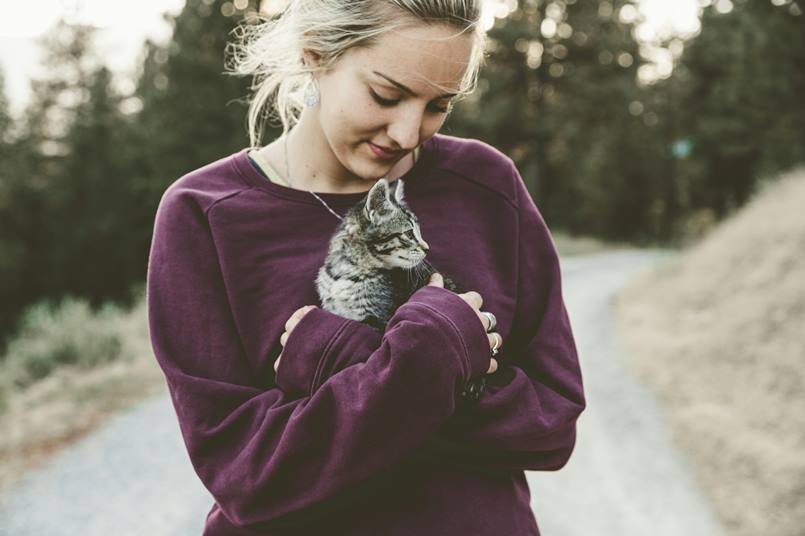In this Article
Why Your Cat’s Immune System Matters
Cats face viruses, bacteria, and environmental stressors daily. Age, chronic disease, multi-pet dynamics, and diet shape resilience. As obligate carnivores, cats should get most nutrients from animal protein and fat; plant ingredients are functional extras. The six superfoods below support anti-inflammatory pathways, skin and gut integrity, and overall vitality when layered onto an AAFCO/FEDIAF-complete diet.
Portion Guide (toppers, not meal replacements)
20–25 g cooked, boneless, 1–2×/week. Avoid raw fish and seasoned skin.
2–3 berries/day, mashed into food. No sweeteners; xylitol is toxic.
Tiny pinch (≤1/8 tsp) 2–3×/week mixed with fat. Skip pepper unless vet-formulated.
1 tsp plain purée daily. No spices/sugar. Ensure water access.
1–2 tsp cooked mash ~1×/week. Never raw.
¼–⅓ cooked egg, 2–3×/week. No salt, milk, or seasonings.
Treats rule: keep extras ≤10% of daily calories. Do not alter therapeutic diets without veterinary approval.
1) Salmon — Omega-3 Support for Immune Modulation
Marine omega-3s (EPA/DHA) help regulate inflammatory mediators and support white blood cell function. They improve skin-barrier integrity and coat quality, reducing low-grade inflammation that silently taxes immunity. Cooked, boneless salmon is a palatable way to raise omega-3 intake without relying solely on capsules.
For sensitive cats, start with teaspoons of finely flaked salmon mixed into moist food; increase gradually to avoid GI upsets and to keep the topper under the 10% calorie rule.
2) Blueberries — Compact Antioxidant Protection
Blueberries provide anthocyanins and vitamin C that neutralize free radicals and help maintain healthy mucosal surfaces — the body’s frontline against pathogens. Their low calorie density suits indoor or overweight cats when finely mashed and blended into wet food so picky eaters can’t sort them out.
Antioxidants work best as consistent, small exposures rather than large, sporadic portions; pair blueberries with water-rich meals to support urinary health.
3) Turmeric — Gentle Anti-Inflammatory Help
Curcumin can temper chronic inflammation when used conservatively under veterinary guidance — useful for aging joints or itchy skin. Feline GI tracts are sensitive, so avoid DIY mega-doses and pepper “hacks”; pet-specific, bioavailability-enhanced formulas are safer if your vet recommends them.
Introduce tiny amounts blended into a fatty base to aid absorption; monitor for GI signs and discontinue if vomiting or diarrhea appears.
4) Pumpkin — Fiber + Beta-Carotene for Gut-Driven Immunity
Up to 70% of immune activity originates in the gut. Plain pumpkin purée offers soluble fiber that feeds beneficial microbes, helping normalize stool and reduce hairball risk. Beta-carotene contributes antioxidant support and vitamin A for epithelial health (skin and mucosa).
If stools loosen, reduce the amount or frequency and increase water intake. Use single-ingredient purée with no sugar or spices.
5) Sweet Potatoes — Vitamin-Rich Energy in Small Doses
Sweet potatoes provide antioxidants and micronutrients that support mucosal defenses and aid skin repair. Because cats have limited carbohydrate tolerance, treat sweet potato as a functional garnish — useful for picky eaters or as a carrier for supplements, not a staple.
Always cook thoroughly and mash finely. Pair with protein-rich meals to prevent carb-heavy plates that may dilute essential amino acids.
6) Eggs — Complete Protein for Antibody Building
Eggs deliver a highly digestible amino-acid profile that supports immune-cell turnover and tissue repair. Cooking neutralizes avidin in the white (which otherwise binds biotin). Keep prep simple and unsalted — cats don’t need culinary extras.
If your cat is on a kidney or pancreatitis plan, clear added protein and fat with your veterinarian before including egg toppers.
Safety First — Introducing Superfoods
- Go slow: start at ¼ of the suggested portion for 3–5 days; watch stool, vomiting, itching, appetite.
- Mind conditions: kidney disease, pancreatitis, IBD, food allergies, pregnancy/lactation — adjust with your vet.
- Avoid toxins: never feed onion/garlic, grapes/raisins, alcohol, caffeine, chocolate, or xylitol.
- Stay balanced: superfoods layer onto a complete diet that meets AAFCO/FEDIAF profiles; don’t dilute prescription diets.
- Calorie budget: treats + toppers ≤10% of daily calories to prevent imbalance and weight gain.
Storage & Prep Tips
- Batch & freeze: portion pumpkin, salmon mash, or egg crumble into silicone trays; thaw single servings.
- Date & discard: cooked fish/egg toppers last ~2–3 days refrigerated; discard if odor changes.
- Texture wins: finely mash or mince add-ins so picky cats can’t “eat around” them.
- Hydration boost: warm toppers to room temp and add a splash of water or broth.
Bottom Line
Salmon, blueberries, turmeric, pumpkin, sweet potatoes, and eggs are practical add-ons that support immunity via improved inflammation control and stronger skin-and-gut barriers. Start with one superfood, observe your cat’s response, and refine portions with your veterinarian. Consistency beats megadoses — and palatability is key for long-term success.
FAQs
Can all cats have these superfoods?
Most healthy adults can in small amounts. For kittens, seniors, and cats on medical diets or with chronic conditions, get individualized guidance first.
How often should I offer them?
One to three times weekly is typical. Keep extras under ~10% of calories and monitor body-condition score monthly.
Are supplements better than whole foods?
Whole foods are a practical first step. When precise dosing is needed (e.g., EPA/DHA for skin or joints), vet-directed supplements can complement toppers.
My cat refuses new foods — any tricks?
Use micro-doses, warm to enhance aroma, mix thoroughly into favorite wet food, and try “crumb coating” the surface instead of burying the flavor.

